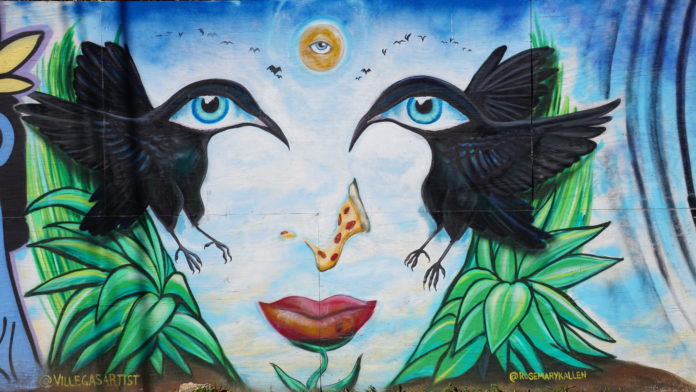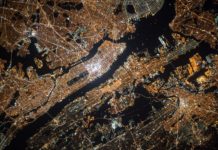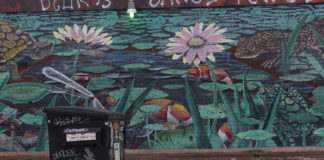Magenta cantuta and bright red bromeliads tumbled over ancient rock. Clear spring water slid along a series of Incan chutes, built 500 years ago. Machu Picchu, which we’d visited the day before, had been crawling with tourists like fleas on one of Cusco’s affable street dogs. But Típon, the water temple, stood nearly empty, and silent, aside from its burbling, and our guide’s low voice, describing the symbolism of the manmade streams.
My father nodded at Odon’s words, pleased by the Incans’ efficient engineering, while my mother pressed Odon on numerological interpretations. My boyfriend photographed the site’s stunning terraces while I stared at water gushing over a strategically inserted stone, falling six feet to a square pool, built to slow the water’s passage. It echoed a waterfall’s natural architecture, simultaneously mirroring and manipulating nature, a working paradox that I admired.
Back in Austin now, it is January, the start of a new year, a new decade. I loved staring at those weathered structures, basking in the genius and creativity of Incan masonry. It is tempting to romanticize ancient indigenous cultures, a posture that condescends as much as it praises. Instead, I try to seek inspiration from the sources that may have inspired ancient artisans. A water temple devoted to flow, that liquid state turned mental sweet spot in today’s productivity parlance.
Cities, like rivers, like canals, shape the ebb and flow of their inhabitants. They get tediously jammed (I’m looking at you, I-35 traffic) and dangerously dammed (gerrymandering, gentrification). How do you flow through Austin? What are your still pools, your rapids, your seasonally parched riverbeds? What encourages a tumbling delight? Another way of thinking about urban flow is to consider what specific elements (architecture, art, vistas, gatherings, patterns, ceremonies) consistently move you (and a few of those are likely the reasons you moved here). For me, that’s listening to Dale Watson’s rockabilly on KUTX and bouncy late night K-pop on KVRX (“None of the hits, all the time”). Solo secret hikes along the Greenbelt. Sitting at June’s, on South Congress, midday, luxuriating in the hushed lethargy of a bistro between mealtimes. Shopping at H-E-B on E. 7th on a Friday night, admiring everyone’s outfits, be they sweatpants or suede. And, of course, lying next to my beloved at Barton Springs.
Leaving Austin for other cities is another, broader kind of flow, whether it happens in an Airstream or through an airstream, and my time in Lima and Cusco made me eager for more travel within Austin in 2020: to eddies and tributaries and cascades I’ve never paddled. Sichuan restaurants in the far north, craft breweries in the far south, live salsa bands downtown and James Turrell’s Skyspace, a secular temple that, like Machu Picchu, worships the sun, and honors our ancient and modern longing to stare at the sky. Some days it has answers. Most days it just stares back, unblinking.
Brittani Sonnenberg is an Austin writer and author of Home Leave, a novel
If you like what you’ve been reading, please click here to subscribe and we will send you updates and our newsletter.





